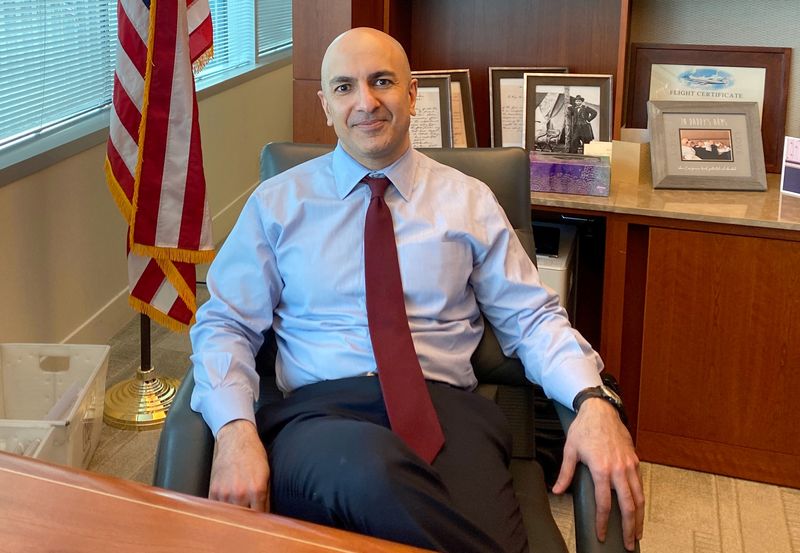Fed’s Kashkari says tight monetary policy may be needed for ‘extended’ time
2023.05.11 11:03

© Reuters. FILE PHOTO: Minneapolis Federal Reserve Bank President Neel Kashkari poses during an interview with Reuters in his office at the bank’s headquarters in Minneapolis, Minnesota, U.S., January 10, 2020. REUTERS/ Ann Saphir/File Photo
By Ann Saphir
(Reuters) – An extended period of high interest rates and an inverted yield curve could put more stress on banks, but would be necessary if inflation stays stubbornly high, Minneapolis Federal Reserve President Neel Kashkari said on Thursday.
There is some evidence high inflation “is coming down, but so far it’s been pretty darn persistent – that means we are going to have to keep at it for an extended period of time,” Kashkari said during an event at Northern Michigan University in Marquette, Michigan.
The Fed has raised its benchmark overnight interest rate by a full five percentage points over the last 14 months. After central bank policymakers lifted the policy rate to the 5.00%-5.25% range last week, Fed Chair Powell signaled that while they may be nearly done with raising rates, they are not close to cutting them.
Kashkari underscored that point on Thursday, and said he worries about the impact of that policy on banks that have been under particular pressure since a couple of failures in March and another collapse this month.
“The real question is, when is inflation going to come down,” he said. “If inflation is going to stay high and it’s embedded in our economy, and we have to run tight monetary policy and an inverted yield curve for an extended period of time, that creates real problems for banks of all sizes. We are very aware of that.”
If inflation falls pretty quickly, as financial markets now expect he said, “one might imagine interest rates normalizing, the yield curve uninverting and then the pressure on banks and their deposit bases becomes much much smaller.”
But he did not sound very convinced, noting that inflation has surprised policymakers with its persistence, and that the data push him toward the “hawkish” side of the Fed policy spectrum.
With inflation far too high, Kashkari said in response to a question from the audience, “now is not the time” to rethink the Fed’s 2% target for inflation. That goal, set in 2012, “is permanent for the near future,” at least until the Fed gets inflation down to that goal, he said.
“It is conceivable that once we get through this inflation period, and we get inflation back down to 2%, we could have a deliberation with, for example, elected leaders in Washington and say, hey does 2% still make sense – should it be 2 1/2, should it be 3, should it be 1-1/2 – but we can’t change it while we are missing it.”








